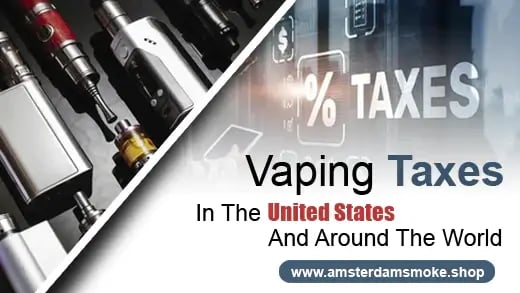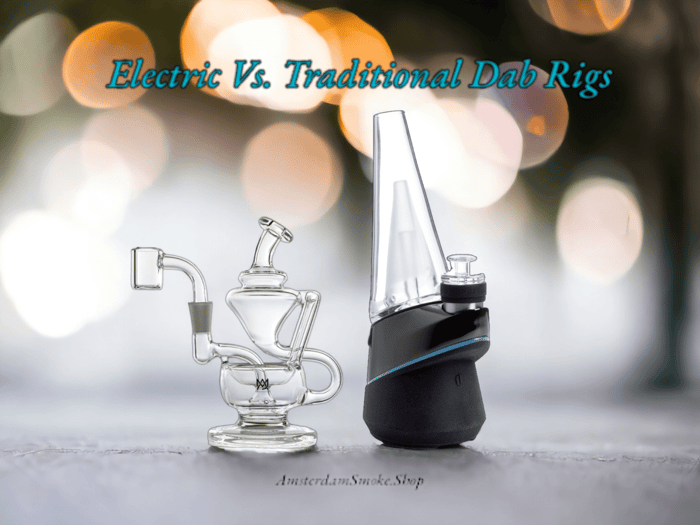
Vaping Taxes In The United States And Around The World
For decades, vaping products have been soft targets of governments. It is due to the reason that vaping items are a great source of revenue generation. It’s not a matter of contention whether vaping products deserve to be taxed, but the average percentage of vaping taxes worldwide, especially in the United States.
With the growing popularity of vaping products, there’s a drastic decline in tobacco-based items. As a result, governments around the world experience potential loss of revenue. They try to impose substantial taxes on vaping items to compensate for this loss. However, some states like Texas don’t follow this and levy no vaping tax. As per vaping bill in the Texas legislature 2023 session, a consumer can consume vape without paying any.
Now, they are systematically imposed by the United States and elsewhere. Let’s dig into this attractive target by politicians and see the average percentage.
Why Governments Impose Taxes on Vaping Products?
This system contributes to meeting society's demands. They are essential to fill the financial voids. Without this, the wheels of the country’s economy will become stagnant, and it cannot raise any revenue. Similarly, by imposing these on vaping products, governments find it the best way to meet financial expenses.
Similarly, governments impose vaping age to curb its side effects on teenagers and adults. Some states, like Texas, also prohibited its usage in schools. That’s why the vaping ban in Texas only applies to citizens under 21 years old.
Authorities levy them on vaping products to contribute to other public sectors, including health, education, transport, infrastructure, etc. Thus, by taxing vaping items, the government focuses on human development.
What Metrics Contribute?
Introducing e-cigarettes and new vaping products has created complexities in the taxation system. Due to the diversity of the products and different levels of nicotine, each government has to introduce standardized taxation metrics.
In the American region, progress has been seen in understanding the significance and implementation. These taxes apply to selected goods and services, like tobacco and vaping products. However, governments see this instrument as reducing this toxic product consumption.
Here’s the metric that some specific countries use to apply excise taxes on vaping products;
- Volume per ml; this specific scale imposes taxes on vaping products with a high nicotine concentration. Here, a different tax ratio is applied, depending on ml of nicotine per volume of the product. Countries that follow this metric are; Albania, Denmark, Kazakhstan, Kyrgyzstan, Pakistan, Portugal, the Republic of Korea, Romania, Sweden, and Uzbekistan.
- Unit per Cartridge; Countries like Kenya follow this standard protocol.
- Defining by retail price; Countries like Ecuador, Costa Rica, Spain, Switzerland, etc. impose based on the retail price of products.
Ongoing Vaping Taxes In The United States
Currently, 21 states in the U.S. are levying taxes on vaping products. Each state has different metrics to calculate the percentage. For instance, some states, such as New York, implement based on “ad valorem,” Some, such as Kansas, impose depending on a “specific tax.” In contrast, others, such as New Mexico, integrate these two tiers to produce a well-running taxation system.
Each state employs different strategies to construct a well-organized vaping taxation system.
Countries that use an ad valorem system impose vaping taxes depending on the constituents of the vaping products. For instance, California and DC only impose them on e-cigarette devices and nicotine liquid. Moreover, vaping taxes in these states range from 15% of wholesale price in Illinois to 90% in DC.
Let’s look at the percentage of taxes imposed on vaping products in the US.
|
State |
Tax on nicotine and non-nicotine e-liquid per milliliter |
Wholesale tax on nicotine products |
|
Alaska |
45 percent |
55 percent wholesale tax |
|
Delaware |
0.05$ |
61.74 percent tax |
|
Connecticut |
0.04$ |
10 percent |
|
Georgia |
0.05 |
7 percent |
|
District of Columbia |
91 percent |
|
Indiana |
15 percent |
|
|
Maine |
43 percent |
|
|
Washington State |
$0.27 per milliliter of e-liquid in pods or cartridges in less than 5 ml $0.09 per milliliter of e-liquid in pods or cartridges in more than 5 ml |
|
|
Colorado |
35% |
|
|
Illinois |
$0.20 per ml of nicotine |
15% |
|
Kansas |
$0.05 per ml tax on nicotine |
|
|
Kentucky |
15% |
|
|
Maine |
43% |
|
|
Maryland |
6% |
|
|
Minnesota |
95% |
|
|
Nevada |
30% |
|
|
New Hampshire |
$0.10 per ml tax on nicotine |
8% |
|
Oregon |
65% |
|
|
Puerto Rico |
$0.05 per ml tax on nicotine |
|
|
Texas |
According to the Vaping laws in Texas 2023, the state implies no vaping tax in Texas. Although the country strictly imposes cigarette tax, vaping products don’t meet the statutory definition of cigarette. As a result, Texas only applies sales tax on vaping products. |
|
|
Utah |
56% |
|
|
Wisconsin |
$0.05 per ml tax on nicotine |
|
|
Wyoming |
15% of the wholesale tax |
Some states in the United States apply them based on the volume of nicotine in vaping products. On the other hand, different states impose them depending on the vaping product wholesale rate.
Vaping Taxes in Other Countries
The global market is equally affected. Numerous countries' governments consider it a threat to cigarette taxes. The subsequent table shows some collected information based on tax implementation on nicotine and non-nicotine e-liquid in different countries of the world.
|
Country |
Tax on nicotine and non-nicotine e-liquid per milliliter |
Wholesale tax on nicotine product |
|
Albania |
$0.091 per ml of nicotine |
|
|
Azerbaijan |
$0.01 per ml |
|
|
Canada |
CAD 1 (about $0.75 US) per 2 milliliters) |
|
|
Croatia |
No vaping tax |
|
|
Cyprus |
$0.14 per ml |
|
|
Bahrain |
Illegal |
Illegal |
|
China |
11% |
|
|
Denmark |
DKK 2.00 ($0.30 US) |
|
|
Finland |
$0.34 |
|
|
Malaysia |
40 sen ($0.10 US) |
|
|
Germany |
€0.16 |
|
|
Greece |
$0.11 per ml |
|
|
Hungary |
HUF 20 or $0.07 per ml |
|
|
Italy |
€0.13 per milliliter tax on nicotine products, and €0. 08 per milliliter tax on nicotine-free products. |
|
|
Indonesia |
57% of the retail price |
|
|
Kenya |
The Kenyan tax, implemented in 2015, is 3,000 Kenyan shillings ($27.33 US) on devices and 2,000 ($18.22 US) on refills. The taxes make $0.50 per pack)—and are probably the highest vape taxes globally. |
|
|
Jordan |
|
200% of the CIF |
|
Kazakhstan |
No vaping tax |
|
|
Russia |
13 rubles per milliliter |
|
|
Poland |
0.55 Polish Zloty (PLN) ($0.14 US) |
|
|
Saudi Arabia |
100% of the pre-tax price |
|
|
Serbia |
4.32 Serbian Dinar or $0.44 per ml of nicotine |
|
|
South Korea |
$0.02 per 20 cartridge |
|
|
Togo |
45% of the wholesale cost |
|
|
UAE |
50% of the retail price |
The above information is from a few countries on different continents of the world about taxes on vaping products.
Every state differs in tax imposition and legalization of the products, so make sure you go through the state law carefully. So, study well before carrying one with you on travels.
Conclusion
Hence, it’s evident that each state worldwide has its principles, statutes, and regulations in dealing with vaping products consumptions. Many countries impose high vaping taxes to control its rigorous use, especially among teenagers. Whether we mock this vaping taxation system or blame the stakeholders, in the end, it’s doing good for those addicted to vape items.




